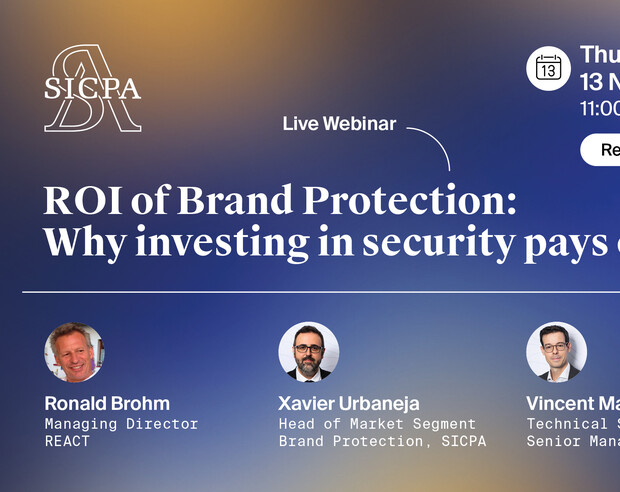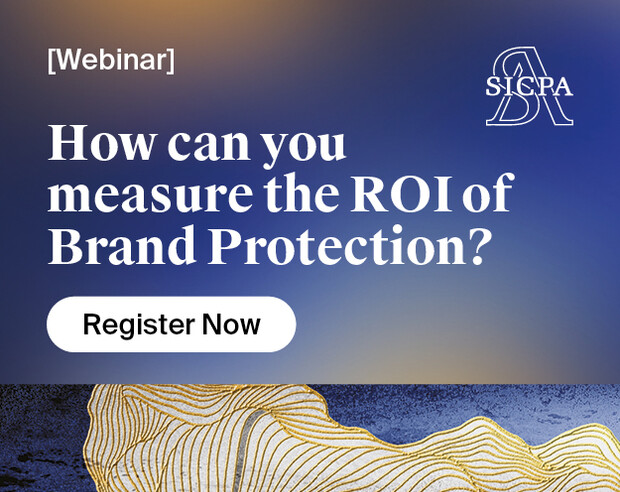
How luxury brands handle product forgeries?
Counterfeit luxury items have become a worldwide issue, constituting a significant portion of the $4.5 trillion global market for fake goods. From knock-off designer bags to highly convincing "super fakes," the proliferation of counterfeit luxury items is not only a threat to brands but also a hidden risk for consumers.
While luxury goods have always attracted counterfeiters, the scale and sophistication of fakes today make it harder than ever for consumers to distinguish between authentic and imitation designer goods.
In this article, we’ll explore how top luxury brands and industry leaders, like SICPA, are stepping up their efforts to combat counterfeiting. From leveraging cutting-edge technology to reconnecting with their heritage, luxury brands are adopting new strategies to protect their legacy, uphold brand exclusivity, and maintain trust with their loyal customers.
Why Counterfeit Luxury Goods Are So Pervasive
The counterfeit luxury market has grown in parallel with the global demand for high-end products. As digital platforms provide easy access to consumers worldwide, counterfeit luxury goods have found a prime avenue for distribution, especially as these platforms often struggle with enforcing strict counterfeit regulations.
The Market for Fake Luxury Goods
Digital platforms have been instrumental in the rise of counterfeit fashion products. Marketplaces and social media platforms have created a high-volume, fast-paced environment where counterfeiters can operate with relative anonymity, often staying a step ahead of enforcement. From online listings to discreet seller accounts on social networks , the modern counterfeit industry has embraced digital tools to target consumers. The convenience of online shopping makes it easy for consumers to purchase items they believe to be genuine but are, in reality, cleverly disguised counterfeits.
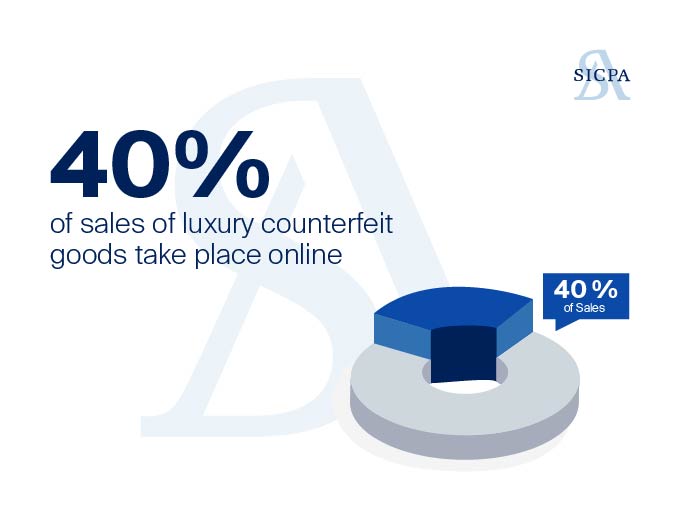
While some consumers knowingly buy imitation designer goods for a lower price, many are deceived by nearly flawless replicas. This trend underscores the need for more robust countermeasures from luxury brands and tech giants to prevent fake products from flooding the market.
The Human Cost of Counterfeit Luxury Goods
While counterfeit medications or food products can pose direct and potentially fatal risks to consumers, fake luxury items are often perceived as harmless, with the worst outcome being an allergic reaction. Some individuals intentionally purchase these counterfeit goods, believing they cause no real harm and only result in minor financial losses for wealthy companies. However, this perspective overlooks the severe human cost associated with the production of counterfeit luxury goods.
These counterfeit items are frequently manufactured under deplorable conditions, often involving forced labor or child exploitation. The true cost of these fake luxury goods is far greater than a potential allergic reaction; it includes the profound and severe harm inflicted on vulnerable individuals involved in their production.
Most Counterfeited Brands in Luxury
Certain brands are more vulnerable to counterfeiting due to their global popularity and high perceived value. Iconic brands are among the most counterfeited in the world, facing continuous battles to protect their brand identities. These brands represent status, quality, and exclusivity—qualities that counterfeiters aim to replicate but never truly achieve. The high demand for these brands, coupled with their steep prices, makes them prime targets for counterfeiters looking to capitalise on unwitting buyers.
The Impact of Brand Counterfeiting on Luxury Brands
The ramifications of counterfeiting extend far beyond the financial losses for luxury brands. Counterfeiting damages brand value, harms customer trust, and disrupts the entire luxury ecosystem.
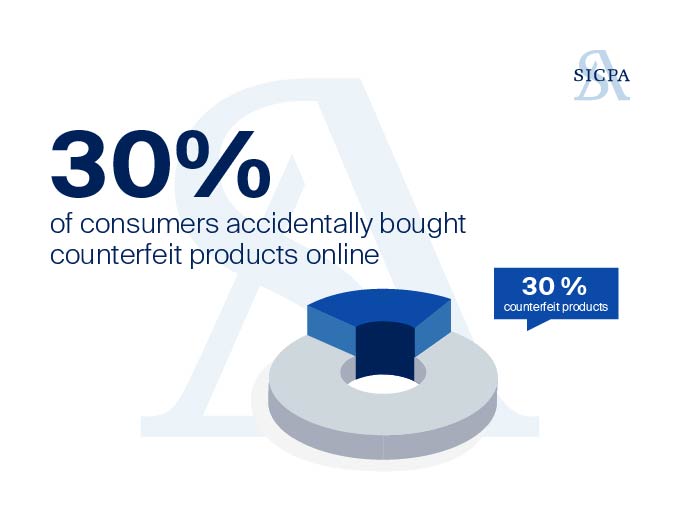
Erosion of Brand Value
A luxury brand's value is built on trust, craftsmanship, and exclusivity. When counterfeit goods flood the market, they dilute the exclusivity that customers seek in luxury products. For buyers, the presence of counterfeit goods can create a sense of disillusionment, as they may begin to question the value and authenticity of the brand’s products. Counterfeits not only harm the brand’s image but also impact customer loyalty, as customers who fall victim to counterfeit goods might avoid the brand in the future.
Financial Implications of Fake Luxury Goods
Beyond brand image, counterfeiting leads to significant financial losses. Luxury brands invest heavily in product development, design, and marketing to establish a sense of prestige and craftsmanship. Counterfeit goods, however, undercut these investments by offering imitation goods at lower prices, diverting potential revenue away from the brand. Each year, luxury brands lose billions to counterfeits, which negatively impacts their financial performance, their ability to innovate, and even their market growth. Combating this requires continuous investment in anti-counterfeiting measures, legal actions, and consumer education efforts.
Innovative Anti-Counterfeiting Technologies Used by Luxury Brands
In response to these challenges, luxury brands are adopting advanced technologies to combat counterfeiting and ensure product authenticity. Technologies like IoT, AI, blockchain, and SICPA’s innovative security solutions are helping brands maintain control over their products and supply chains.
IoT, AI, and Blockchain
Many luxury brands are integrating Internet of Things (IoT) devices and AI-driven analytics into their products and supply chains. Blockchain has emerged as a robust tool for enhancing transparency and traceability. By recording each stage of a product’s lifecycle on a secure, tamper-proof ledger, blockchain allows brands to provide customers with a verifiable record of authenticity. IoT devices, such as RFID tags and QR codes, are also being used to monitor product movement, making it easier to trace a product’s journey and identify counterfeits within the supply chain.
SICPA’s Role in Anti-Counterfeiting Efforts
SICPA, a leader in secure authentication and traceability solutions, plays a crucial role in supporting luxury brands’ anti-counterfeiting efforts. SICPA began its collaboration with its first luxury client in 2005 and continues to work with them to this day.
Our cutting-edge solutions include high-security inks, unique markers, and tamper-evident seals, all designed to ensure authenticity and traceability. These solutions can be seamlessly integrated into products, packaging, and even labels, allowing luxury brands to embed security directly into their items.
By leveraging SICPA’s innovative technologies, luxury brands can strengthen their defenses against counterfeiting and provide customers with the assurance that they are purchasing a genuine item.
How to Spot Fake Luxury Items: Tips for Consumers
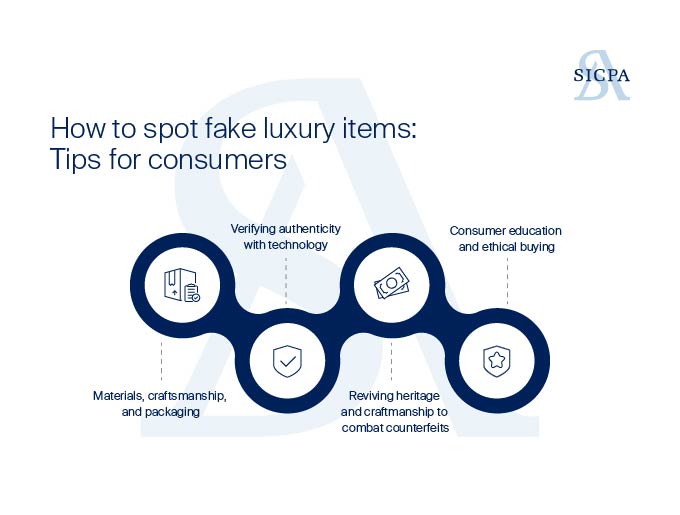
While luxury brands are working hard to protect their products, consumers also need to be vigilant. Here are some tips to help customers spot fake luxury items and avoid counterfeit traps.
Materials, Craftsmanship, and Packaging
Luxury brands are known for their meticulous craftsmanship and attention to detail. Genuine luxury items often feature high-quality materials and precise craftsmanship that counterfeits struggle to replicate. For instance, check for stitching quality, alignment of logos, and weight; counterfeit items are often made with cheaper, lighter materials. Packaging is another key element that helps to prevent counterfeiting—luxury brands invest in elegant, well-designed packaging, which counterfeiters may neglect.
Verifying Authenticity with Technology
Some luxury brands now offer digital verification tools, such as QR codes or NFC tags, embedded within products. By scanning these codes with an app, consumers can verify a product’s authenticity and learn about its origin. Brands are also creating blockchain-backed digital certificates for unique, high-value items, giving consumers a secure, verifiable history of their purchase. These technological tools empower consumers to confidently make informed purchases and avoid falling victim to counterfeit fashion products.
Reviving Heritage and Craftsmanship to Combat Counterfeits
Luxury brands are fighting counterfeiting by embracing their heritage and craftsmanship. Showcasing unique artistry, limited-edition collections, and traditional techniques reinforces authenticity, making counterfeits easier to spot. This approach deepens consumer connection and enables them to spot counterfeit products better.
Consumer Education and Ethical Buying
Education is a powerful tool in the fight against counterfeit culture. Many brands are now educating consumers about the dangers and ethics of purchasing counterfeit goods. By creating awareness around the social and economic consequences of counterfeiting, brands encourage buyers to make informed, ethical decisions. Brands should also inform consumers to choose secure second-hand sites approved by major brands to avoid counterfeit products Ultimately, this approach helps luxury brands build a loyal customer base that values authenticity and can effectively distinguish fake products from real ones.
Conclusion
In the face of rising counterfeits, luxury brands are navigating a complex landscape to maintain authenticity and exclusivity. Through technology, heritage-driven strategies, and partnerships with security solution providers like SICPA, luxury brands are better equipped to tackle the counterfeit crisis. For consumers, choosing authenticity over imitation designer goods is about more than just status; it’s about supporting the artistry, tradition, and integrity that define true luxury.
If you want to learn more about how you can implement measures to protect against counterfeits, please contact us today.
The Brand Protection Insider, by SICPA
Stay ahead in the fight against illegitimate trade with “The Brand Protection Insider” newsletter, by SICPA.
Receive quarterly the Product and Brand Protection newsletter - latest insights, innovative solutions, and expert advice directly to your inbox.
Join our community and build a safer, more reliable future for trade and commerce.
Sign up today!


